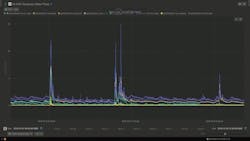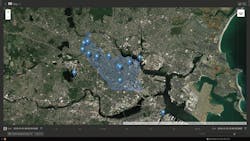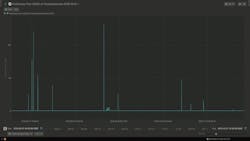Real-Time Data Benefits Combined Sewer Overflow
About the author:
Nicholas Anderson is chief civil networks engineer of water for Stantec. Anderson can be reached at [email protected] or 617.314.7103.
Today, many municipalities are in the process of re-negotiating their National Pollution Discharge Elimination System (NPDES) permit with the U.S. EPA, and permit revisions will become effective almost immediately. The combined sewer overflow (CSO) reporting requirements will include more frequent and detailed public notification on all CSOs to all interested parties.
Across the country, reporting accurate CSO data has long been a challenge. The unpredictability of weather patterns—including the rising regularity of severe weather events—including heavy rainfall or snowmelt, local groundwater levels and temperature fluctuations, are all factors making consistent measurement and accurate reporting tricky.
The city of Somerville, Mass., has been collecting and evaluating both metered and model-simulated CSO flow data since 2016. During this time, extensive model calibration has been performed. With a progressive improvement in metered data quality, correlation between the metered and modelled data has improved. Its next generation step was to develop a pilot-scale analytics platform to visualize real-time CSO performance, send appropriate alerts and report overflow details.
The Future Lies in History
Experience in building analytic platforms provides a general rule of thumb: historic data will help build the right system for tracking and management. There is no “one size fits all,” and each client requires a tailored solution. Stantec recently developed the proof-of-concept for a CSO analytics platform for Sommerville. Some of the elements making up this program include:
• Streamlining data collection from flow, depth meter and rainfall sources into a single platform;
• Converting all input data into a consistent structure and syntax;
• Developing a user-friendly web-based platform for both metered and modelled CSOs, making CSO analysis and reporting more efficient and allowing multiple users to access the data simultaneously;
• Identifying rapidly CSO operational issues by review of near real-time data and analysis of historical time-series data under a range of storm events;
• Creating CSO alerts to identify and confirm CSO overflows;
• Comparing rainfall analysis across gauges, including the future potential for machine learning to develop a more detailed forecast rainfall set;
• Establishing a protocol for calibration and validation of rain gauge data against available radar rainfall data, so Sommerville could then consider migrating toward the use of CSO-risk based on forecast radar rainfall data;
• Allowing for predictive analytics by exploring the relationship between CSO spill and other data (e.g. rainfall, river level, pump station operation), the tool can be used to compare what is happening to what is predicted to happen when the performance of an asset has deviated from its normal, optimum operating range; and
• Early warning through predictive analytics that an overflow and/or flooding could occur using historical data as an indicator to predict CSO and/or flood risk.
To initiate the project, flow and depth meters were installed at key CSO locations. Using an application programming interface (API), live data linkages were created to the CSO data platform screen. The platform was augmented with further publicly available data sources, including U.S. Geological Survey Mystic River stage data and National Oceanic and Atmospheric Administration tidal recordings.
The data platform was at this point available for viewing, and it began analysing the CSO system, including data associated with CSO performance. An example of the Somerville web-based CSO data platform is shown in the figure above.
As future NPDES permits are going to require 24-hour, web-based notification, Sommerville will be well-served to meet the increased reporting requirements, as well as benefit from near real-time analysis and management of its CSO system. Starting development of the web-based CSO analytics platform before the permit is finalized puts the city in a proactive position, allowing for more effective and efficient response to permit requirements.
This pilot-scale development of the CSO analytics platform will help Sommerville—and others considering this technology—determine if migration to a predictive CSO reporting tool is the next step in pursuit of effective CSO monitoring and reporting.


